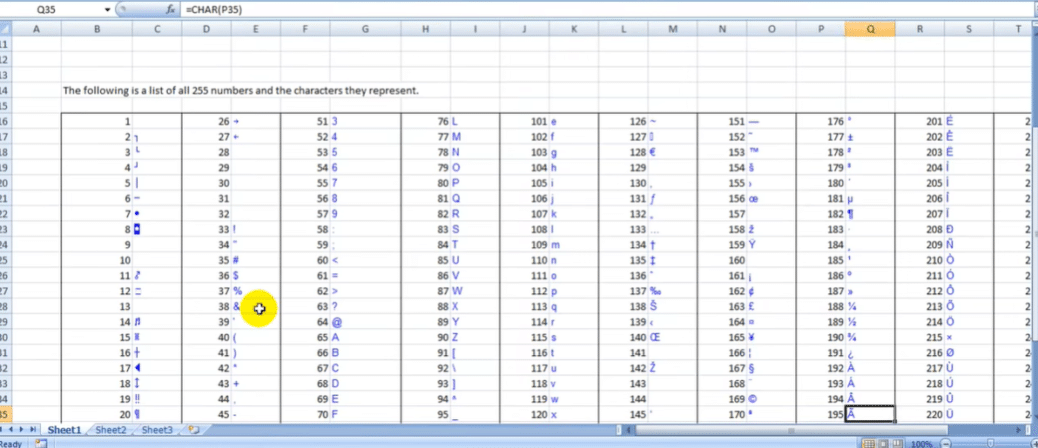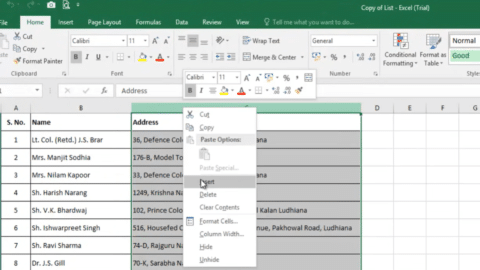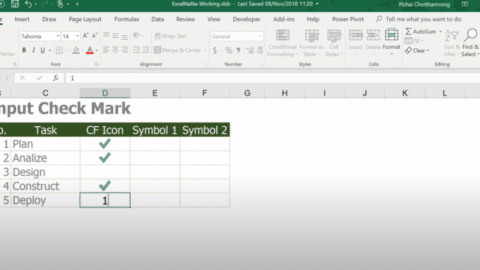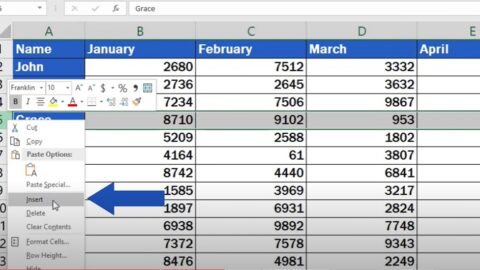In Excel, the CHAR function returns a character from a text string. The function takes an input of one or more characters and then returns the corresponding character from the string. This can be useful for extracting specific characters from a text string, or for finding specific information in a long text string. Let’s take a look at how to use the CHAR function in Excel!
Table of Contents
In Excel, the CHAR function returns the character at a given position in a text string. You can use this function to extract specific characters from a text string or create custom strings. This tutorial will show you how to use the CHAR function in Excel. We’ll also provide tips and examples on best utilizing this function. Let’s get started!
How do you use the CHAR function in Excel?
The CHAR function is used to return a character from a text string. The function takes an input of one or more characters and then returns the corresponding character from the string. This can be useful for extracting specific characters from a text string, or for finding specific information in a long text string. Let’s take a look at how to use the CHAR function in Excel!
In Excel, the CHAR function returns a character from a text string. The function takes an input of one or more characters and then returns the corresponding character from the string. This can be useful for extracting specific characters from a text string or for finding specific information in a long text string. Let’s look at how to use the CHAR function in Excel!
The CHAR function in Excel helps extract characters from a string of text or if you need to find information hidden within a long text. The function takes an input of one or several characters and outputs the corresponding character from your original string. This article will show you how to use the char function in Excel!
The CHAR function in Excel is used to extract a character from a text string. The function first takes one or more characters and then returns the corresponding character from the string. This may be useful for extracting particular characters from a long text string or locating specific information. Let’s see how to use the CHAR function.

What is the use of the CHAR function?
The CHAR function returns the character corresponding to a given numeric code. The code must be within the range of 1 to 255. For example, if you want to display the dollar sign ($) in a cell, you can use the following formula:
=CHAR(36)
This would return the character $ in the cell. You can also use the CHAR function to return non-printing characters, such as carriage returns or line feeds. For example, if you want to insert a carriage return into a cell, you could use this formula:
=CHAR(10)
This would insert a carriage return after the existing text in the cell.
How do I use the CHAR function in Excel?
To use the CHAR function, you will need to enter the following into a cell:
=CHAR(code)
Where “code” is the numeric code for the character, you want to return.
Remember, the code must be between 1 and 255.
You can also use the CHAR function to return non-printing characters, such as carriage returns or linefeeds. For example, if you want to insert a carriage return into a cell, you could use this formula: =CHAR(10). This would insert a carriage return after the existing text in the cell.
What are some examples of how I could use it?
One common CHAR function use is inserting special characters into cells. For example, if you want to insert a copyright symbol into a cell, you could use the following formula:
=CHAR(169)
This would return the copyright symbol in the cell.
Another common use for the CHAR function is to insert line breaks into cells. For example, if you have a list of items in one cell and you want each item on its own line, you can use the CHAR function to insert a line break between each item. To do this, you would use a formula like this:
=A1&CHAR(10)&B1&CHAR(10)&C1
In this formula, “A1” is the cell containing the first item in the list, “B1” is the cell containing the second item, and “C1” is the cell containing the third item. The CHAR(10) function inserts a line break after each item.
You can also use the CHAR function to return non-printing characters, such as carriage returns or linefeeds. For example, if you want to insert a carriage return into a cell, you could use this formula: =CHAR(10). This would insert a carriage return after the existing text in the cell.
Are there any other things I should know about using the CHAR function?
One thing to remember is that the code must be within the range of 1 to 255. You will get an error if you try to use a code outside of this range.
Another thing to keep in mind is that the CHAR function is case-sensitive. This means that if you use the CHAR function to return a lowercase letter, you will need to use a lowercase letter in your formula. For example, if you want to return the character “a”, you would use this formula:
=CHAR(97)
If you try to use an uppercase letter in your formula, such as “A”, you will get an error.
How do I use it 10 in Excel?
The CHAR function in Excel returns a character based on the numeric code that you specify. So, if you want to insert a line break using the CHAR function, you would use the code 10.
To use the CHAR function, you will need to enter it into a cell as a formula. For example, if you wanted to insert a line break after the word “Hello” in cell A1, you would enter this formula into cell B1:
=CHAR(10)&A1
This would give you the result “Hello” in cell A1 and a line break in cell B1. You can then copy cells B1 and C1 down as far as needed.
Hello, I’m Cansu, a professional dedicated to creating Excel tutorials, specifically catering to the needs of B2B professionals. With a passion for data analysis and a deep understanding of Microsoft Excel, I have built a reputation for providing comprehensive and user-friendly tutorials that empower businesses to harness the full potential of this powerful software.
I have always been fascinated by the intricate world of numbers and the ability of Excel to transform raw data into meaningful insights. Throughout my career, I have honed my data manipulation, visualization, and automation skills, enabling me to streamline complex processes and drive efficiency in various industries.
As a B2B specialist, I recognize the unique challenges that professionals face when managing and analyzing large volumes of data. With this understanding, I create tutorials tailored to businesses’ specific needs, offering practical solutions to enhance productivity, improve decision-making, and optimize workflows.
My tutorials cover various topics, including advanced formulas and functions, data modeling, pivot tables, macros, and data visualization techniques. I strive to explain complex concepts in a clear and accessible manner, ensuring that even those with limited Excel experience can grasp the concepts and apply them effectively in their work.
In addition to my tutorial work, I actively engage with the Excel community through workshops, webinars, and online forums. I believe in the power of knowledge sharing and collaborative learning, and I am committed to helping professionals unlock their full potential by mastering Excel.
With a strong track record of success and a growing community of satisfied learners, I continue to expand my repertoire of Excel tutorials, keeping up with the latest advancements and features in the software. I aim to empower businesses with the skills and tools they need to thrive in today’s data-driven world.
Suppose you are a B2B professional looking to enhance your Excel skills or a business seeking to improve data management practices. In that case, I invite you to join me on this journey of exploration and mastery. Let’s unlock the true potential of Excel together!
https://www.linkedin.com/in/cansuaydinim/










